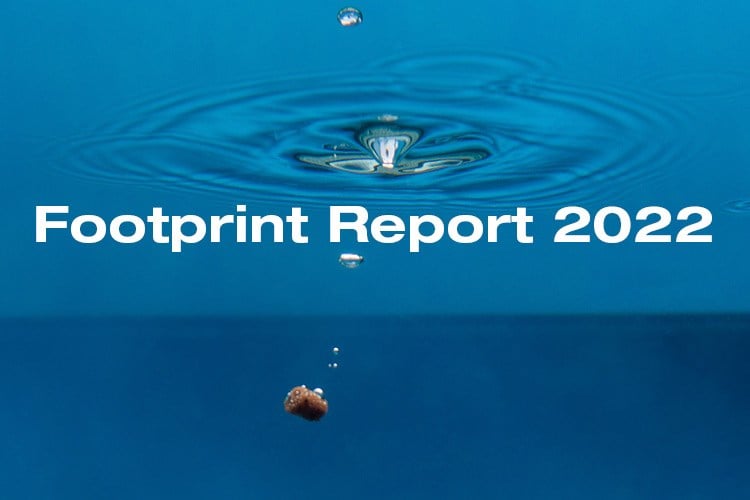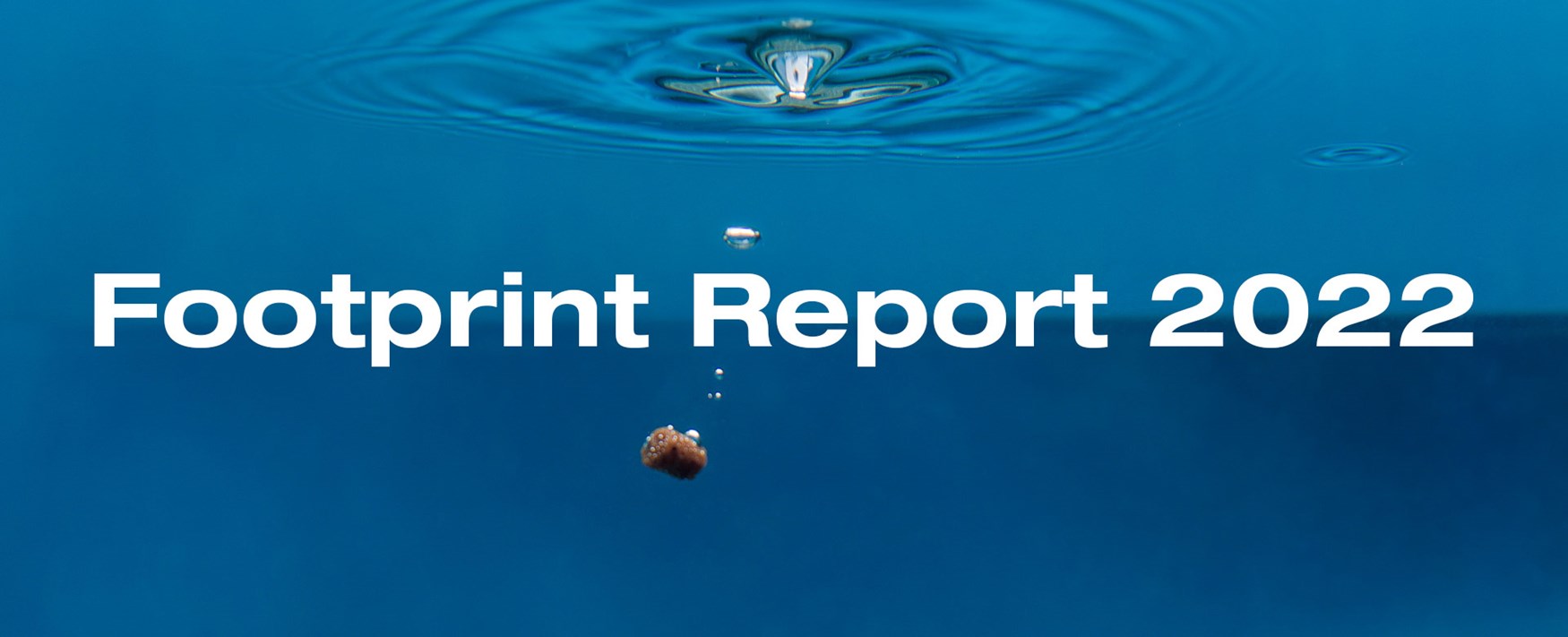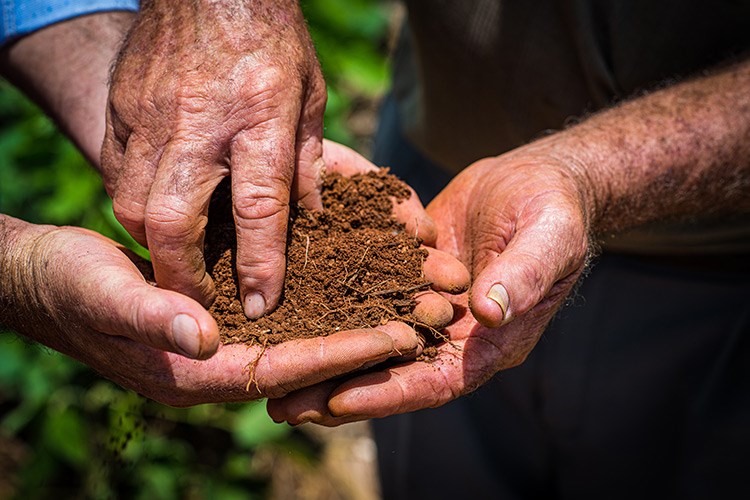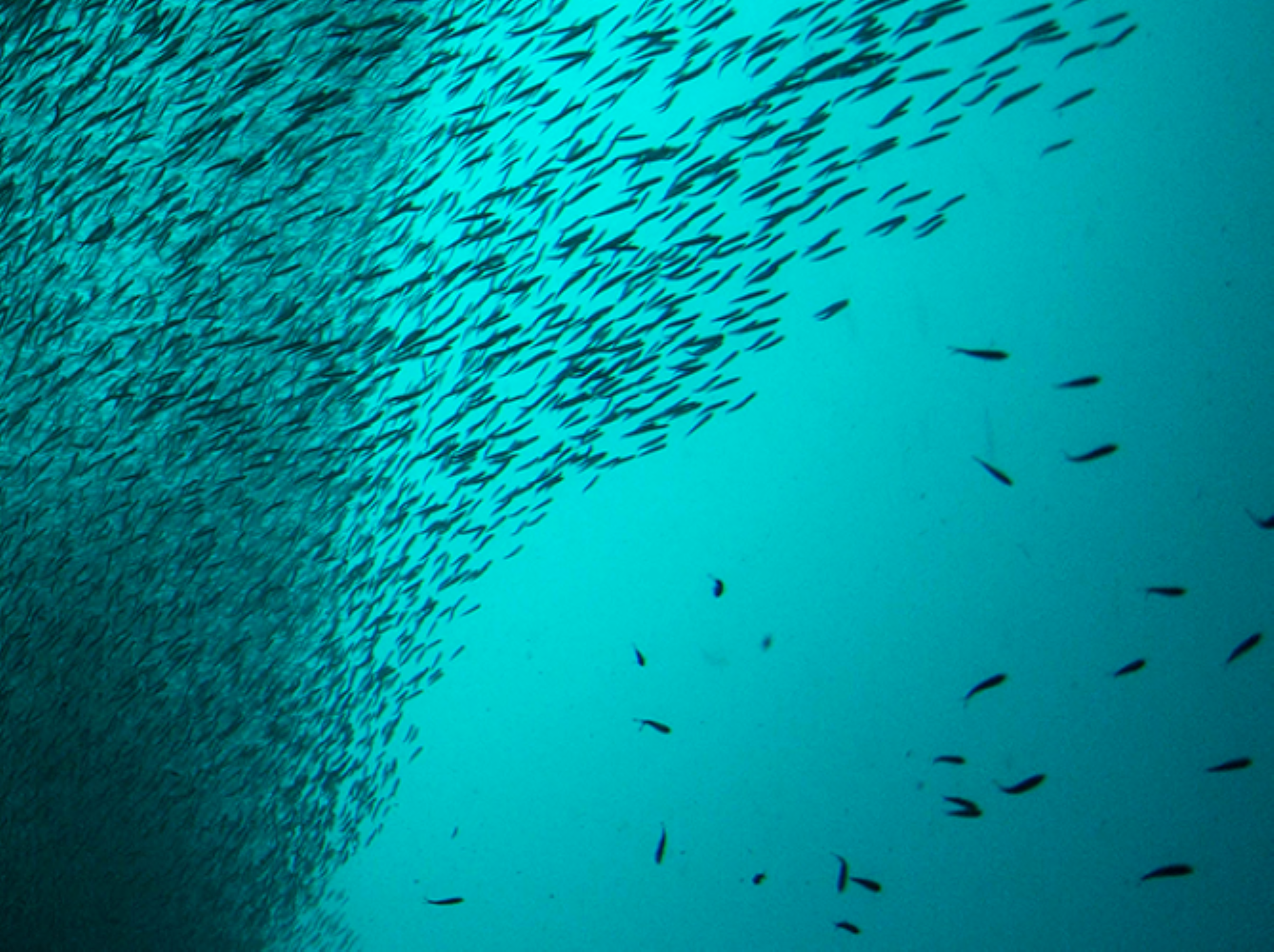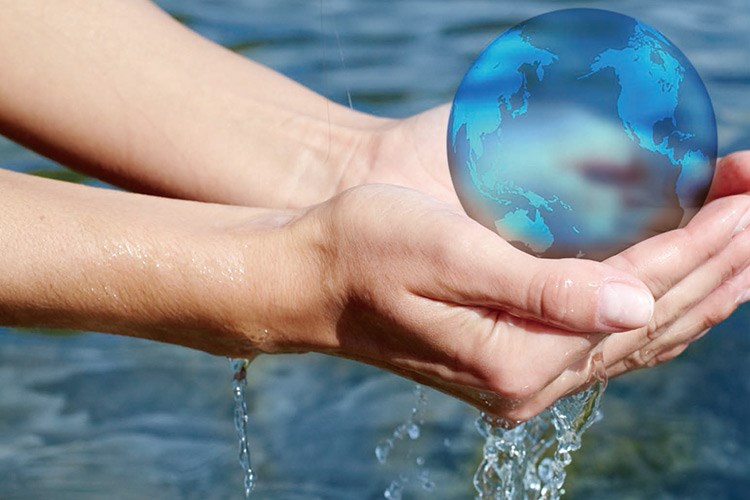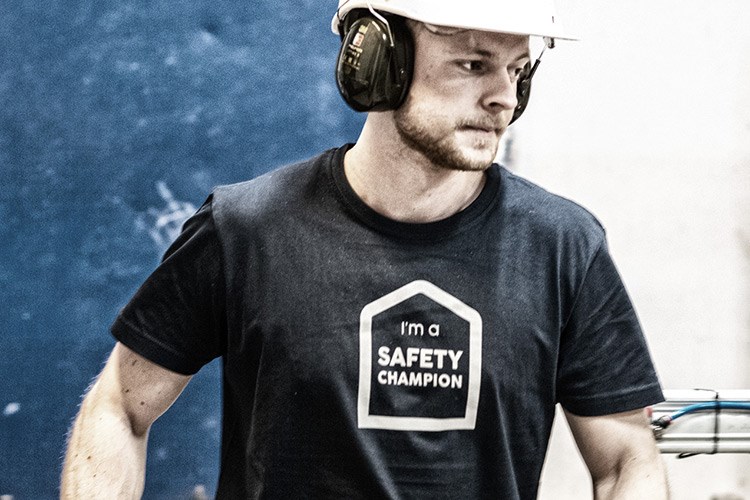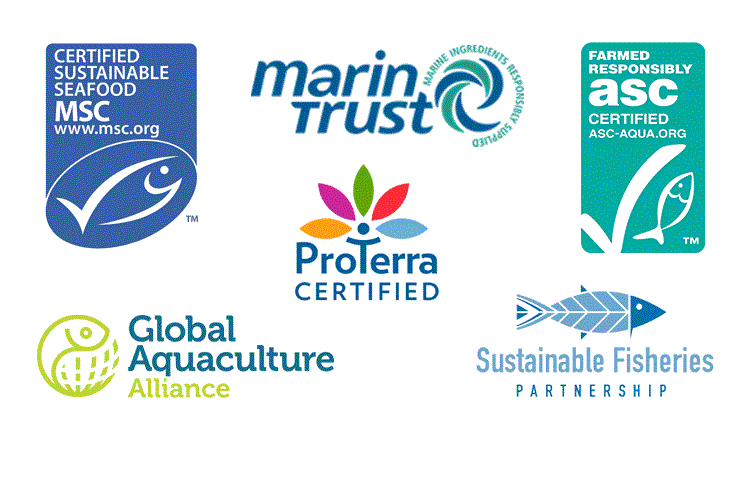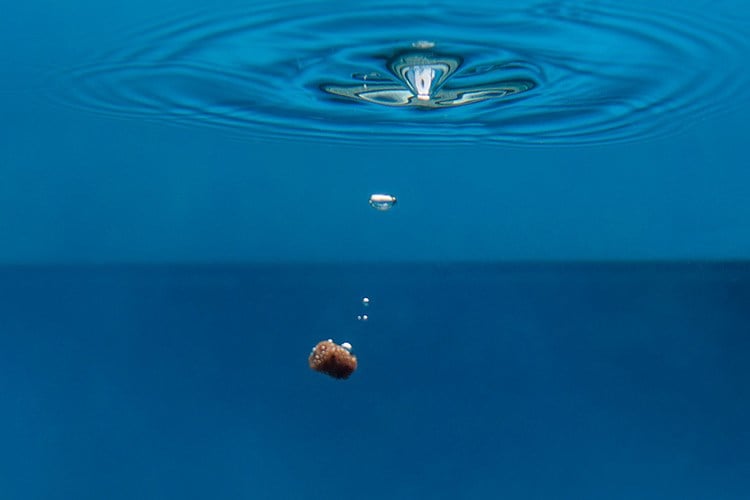
Emissions 2022
Below in this text is the data for our greenhouse (GHG) emissions calculated with CO2 equivalents (CO2eq), and the environmental footprint of our operations plus the nutrient release of nitrogen and phosphorus. Method and data for various calculation methods can be found here.
Through our mother company Nutreco, Skretting has committed to the science-based target initiative (SBTi) with a 30 % reduction of CO2eq for scope 1 and 2, and a 39 % reduction for scope 3 towards 2030 with 2018 as the baseline year. Several of Skretting Norway's customers have also made SBTi commitments, and our feed is their biggest GHG emission factor. To help our customers meet their targets for absolute GHG emissions— including their planned production growth for salmon and trout — we need to do even better in the year running up to 2030.
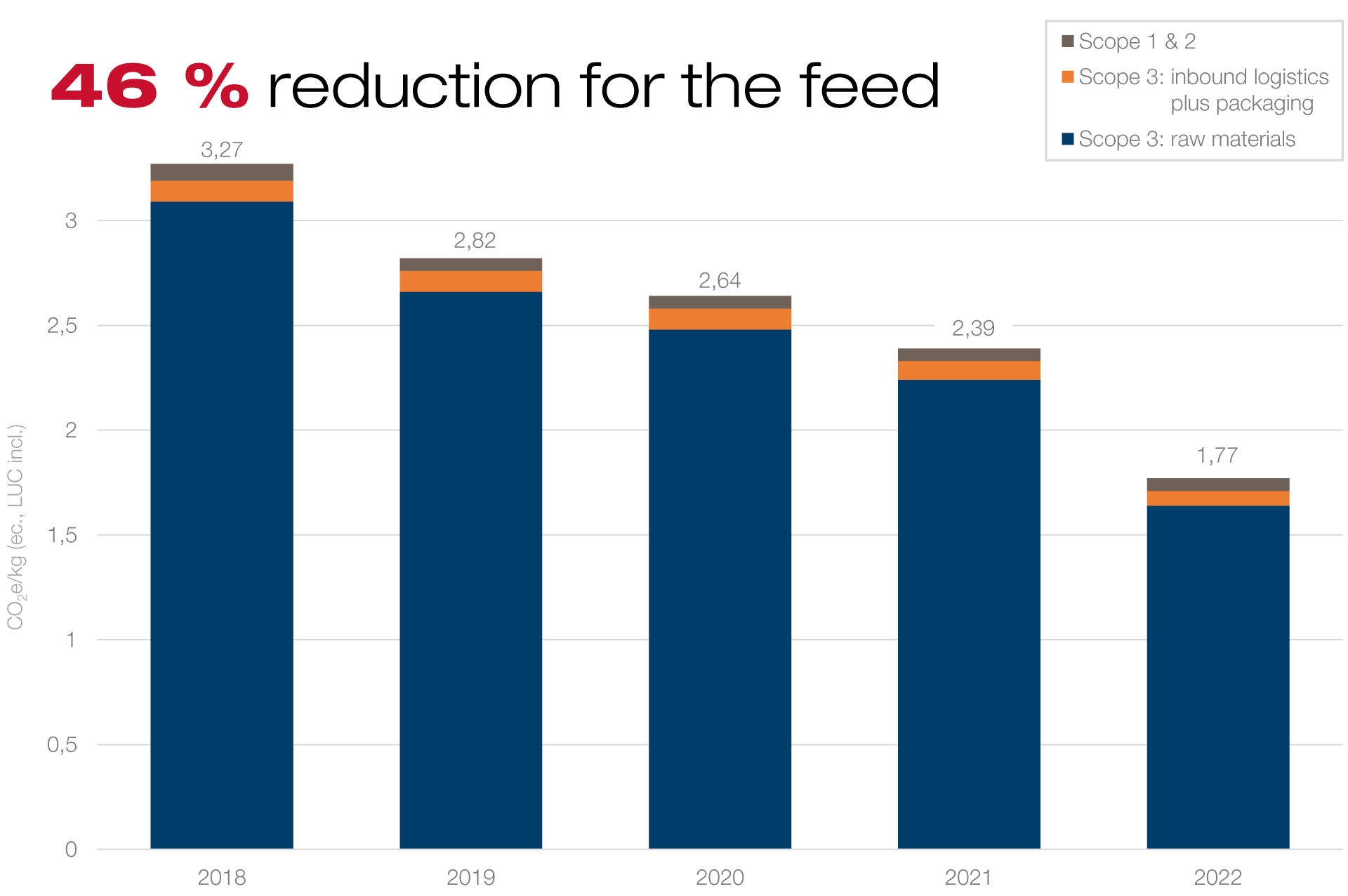
The CO2eq reduction for 1 kg of feed at factory gate is reduced with 46 % from our baseline year 2018 to 2022. This is the major part of salmon's scope 3.
The main reasons for the substantial drop in green house gas emissions are partly due to changes in the raw materials we use. We now also take the footprint per raw material into account when we formulate our feed in addition to evaluate CO2e/kg of the raw materials or from the specific supplier when we do our procurement. Another key driver is improved data quality, especially for soy that our suppliers' primary data is significantly lower than generic numbers. Our Brazilian soy suppliers have also committed to a 100 % deforestation and conversion free supply chain.
Feed plays an essential role in ensuring the health and wellbeing of farmed fish, and can greatly improve the efficiency of the aquaculture process. While gains are made in optimising feed efficiency, feed also contributes one of the biggest environmental impacts.
We will continue to improve our own operations (scope 1 and 2), but the main footprint of feed comes from the raw materials we use. So to further reduce our footprint our reduction strategy can be dived into three main areas:
1) Move to low carbon ingredients
We will replace ingredients with a high carbon footprints and high volume with low footprint ingredients by using circular ingredients, novel ingredients and ‘conventional’ low impact ingredients. This potential is already demonstrated in several cases.
2) Land use reduction
A major part of our GHG emissions is due to land use change, and this will be reduced. Land transformation affects carbon stocks and can result in carbon emitted that was stored in soil or plants (e.g. deforestation). That is why we have demanded that our suppliers of soy protein concentrate (SPC) from Brazilian beans must commit to a soy supply chain free from illegal and /or legal deforestation and conversion, using a cut-off date of August 2020. We also encourage our suppliers to monitor and verify if their farmers have not done any deforestation or conversion for the past 20 years, as is the 20 year amortization period for the standardized calculation method: PAS-2050.
3) Supplier engagement
We truly believe in supplier engagement to fight the climate crisis. That is why we will continue to engage with suppliers to collect and reduce GHG emissions in our supply chain. We will ask them to commit to the Science Based Target initiative (SBTi) because that will level the playing field since we will have the same goals using the same language. In addition we will push to get primary data for products so we can learn from each other and gain a deeper understanding of the supply chain. We will be a knowledgeable partner for both suppliers and customers, adding value to their reduction journey.
Carbon footprint of Skretting Norway's fish feed
Carbon footprint (CO2eq) per kg feed economic allocated with LUC (PEFCR standard)
| 2022 | 2021 | 2020 | 2019 | 2018 | |
| Scope 1 (manufacturing process, direct GHG) |
0,02 | 0,02 | 0,02 | 0,02 | 0,03 |
| Scope 2 (manufacturing process, indirect GHG)* |
0,04 | 0,04 | 0,04 | 0,04 | 0,05 |
| Scope 3 (value chain, indirect GHG)* |
1,71 | 2,33 | 2,58 | 2,76 | 3,19 |
Total per 1 kg feed— GHG footprint at factory gate |
1,77 | 2,39 | 2,64 | 2,82 | 3,27 |
Carbon footprint (CO2eq) absolute tonne emissions, economic allocated with LUC (PEFCR standard)
| 2022 | 2021 | 2020 | 2019 | 2018 | |
| Scope 1 (manufacturing process, direct GHG) |
13.082 | 13.211 | 14.203 | 13.843 | 14.906 |
| Scope 2 (manufacturing process, indirect GHG)* |
23.636 | 23.960 | 24.098 | 22.111 | 30.313 |
| Scope 3 (value chain, indirect GHG)* |
1.006.425 | 1.369.536 | 1.542.762 | 1.534.611 | 1.803.468 |
Total absolute — GHG footprint at factory gate |
1.043.143 | 1.406.707 | 1.581.063 | 1.570.565 | 1.848.687 |
Breakdown of Scope 3 (CO2eq) absolute tonne emissions, economic allocated with LUC, (PEFCR standard)
| 2022 | 2021 | 2020 | 2019 | 2018 | |
| Raw materials | 961.069 | 1.316.349 | 1.482.675 | 1.478.803 | 1.747.011 |
| Inbound logistics | 40.815 | 52.919 | 59.839 | 55.696 | 56.458 |
| Packaging | 4.147 | - | - | - | - |
| Air travel employees | 228 | 84 | 91 | - | - |
| Fossil car travel employees | 154 | 177 | 157 | 111 | - |
| Electric car travel employees** | 12 | 8 | 0 | 1 | - |
Total Scope 3 — GHG footprint at factory gate |
1.006.425 | 1.369.536 | 1.542.762 | 1.534.611 | 1.803.468 |
| Outbound logistics | 23.706 | 22.160 | 22.883 | 19.828 | - |
Total Scope 3 — GHG footprint including outbound logistics*** |
1.030.131 | 1.391.696 | 1.565.645 | 1.554.439 | - |
* A market-based calculation for electricity is used for every year.
** Including fuel, vehicle production, maintenance and road emissions for fossil and electric cars with market-based calculations for electricity.
*** Outbond logistics only covers delivery by boat.
More data and method description
The European Union's Product Environmental Footprint Category Rules (PEFCR) requires carbon footprint to be reported with the economic allocation method including land use change (LUC). So, the tables above are our primary calculation method. We also use market-based calculation for electricity as Norwegian authorities demands from Norwegian power suppliers.
For your convenience we have included more data on a separate page.
- Method
- CO2eq economic allocated with LUC
- CO2eq economic allocated without LUC
- Scope 2 with location based CO2eq calculations
- Scope 2 with market-based CO2eq calculations
- Explanation of CO2eq calculations method
Click here for method and more data
The environmental footprint of our operations
Skretting Norway operates in accordance with the Pollution Control Act (Act of 13 March 1981 No.6 Concerning Protection Against Pollution and Concerning Waste). Each operating plant has permits related to emissions to air, effluents to water and ground and handling of waste. Detailed description of permits for each operating plant together with historical records of emissions can be found here http://www.norskeutslipp.no/
Environmental performance indicator
| 2022 | 2021 | 2019 | 2018 | Unit | |
| Energy consumption | 208,4 | 211 | 217,7 | 229,4 | kWh per tonne |
| Water withdrawal | 341,5 | 345 | 472,6 | 532,7 | liters per tonne |
| Waste generation | 4,3 | 4,0 | 6,1 | 5,7 | kg per tonne |
* A market-based calculation for electricity is used for every year. f Click here for a more detailed explanation of market-based vs. location-based calculation.
Absolute CO2eq emission per energy carrier from operations (tonne)
Through our mother company Nutreco, Skretting has committed to a 30 % reduction of CO2eq for scope 1 and 2 in compliance with the science-based target initiative (SBTi) with 2018 as our baseline year. The reduction from 2018 to 2022 is 19 % for scope 1 and 2.
| 2022 | 2021 | 2020 | 2019 | 2018 | |
| Natural Gas | 3.480 | 3.488 | 4.654 | 4.423 | 4.816 |
| Diesel | 283 | 267 | 293 | 254 | 269 |
| LPG | 1.372 | 1.365 | 1.387 | 1.227 | 1.238 |
| LNG | 7.947 | 8.091 | 7.869 | 7.939 | 8.583 |
| Electricity* | 23.636 | 23.960 | 24.098 | 22.111 | 30.313 |
| Absolute carbon emission (tonne) | 36.718 | 37.170 | 38.301 | 35.953 | 45.219 |
* A market-based calculation for electricity is used for every year. Click here for a more detailed explanation of market-based vs. location-based calculation.
Nutrient release
Nutrients such as phosphorus and nitrogen are essential for life and these elements occur naturally in the water column of both fresh and marine environments. In the environment they function as nutrients for algae growth.
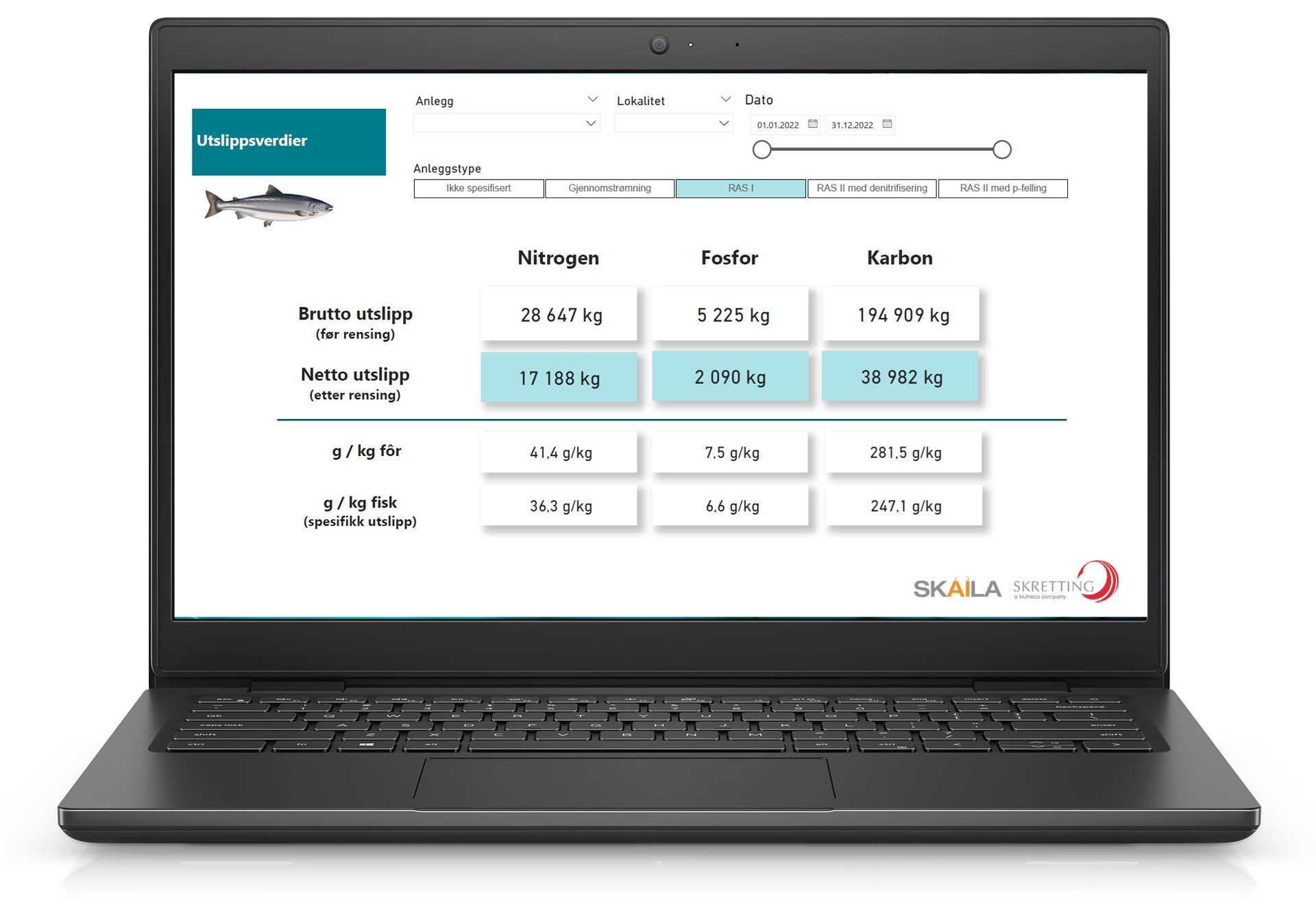
Skretting's newly developed nutrient release calculator offers data for customers, specific feeds and/or for individual fish farm locations based on the delivered feed.
Skretting Skretting is implementing a newnutrient release model that gives our customers emission values for their own feed, even for their own specific locations. We calculate emissions for nitrogen, phosphorus and carbon. The tool will be available on our client net.
Disclaimer
The provided carbon footprint data are based on internal calculations following the core guiding principles of the standard PEFCR Feed for Food Producing Animals (2018), but are not based on fully compliant PEFCR studies. Although Skretting has taken care to ensure that the information contained herein is as accurate as possible and up to date, Skretting does not warrant the accuracy, reliability or completeness of the information. The values have not been externally verified. The information provided is for informational purposes only and is intended for internal business use only. The reader is solely responsible for any interpretation or use of the material contained herein. The footprint data are subject to change (e.g. due to ongoing database development or better supply chain information). Furthermore, cradle-to-gate footprint values are not allowed to be used for comparison or comparative assertions among each other or with other feed footprint data in accordance with international LCA standards. Animal feed is an intermediate product in the food production chain and the footprint attached to it only reflects part of the life cycle. Without considering feed performance/ functionality and downstream impacts, comparison is neither allowed nor meaningful.
